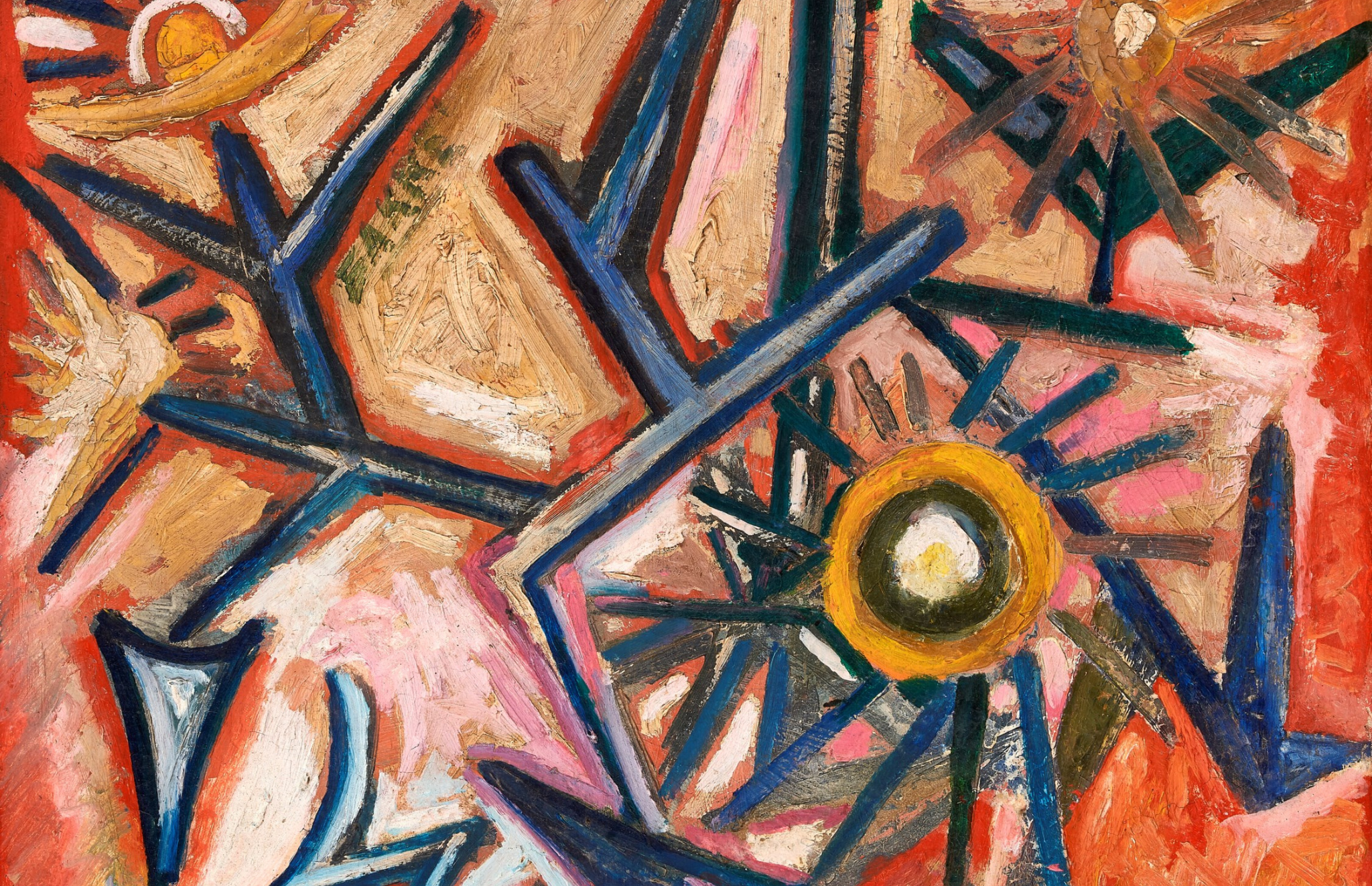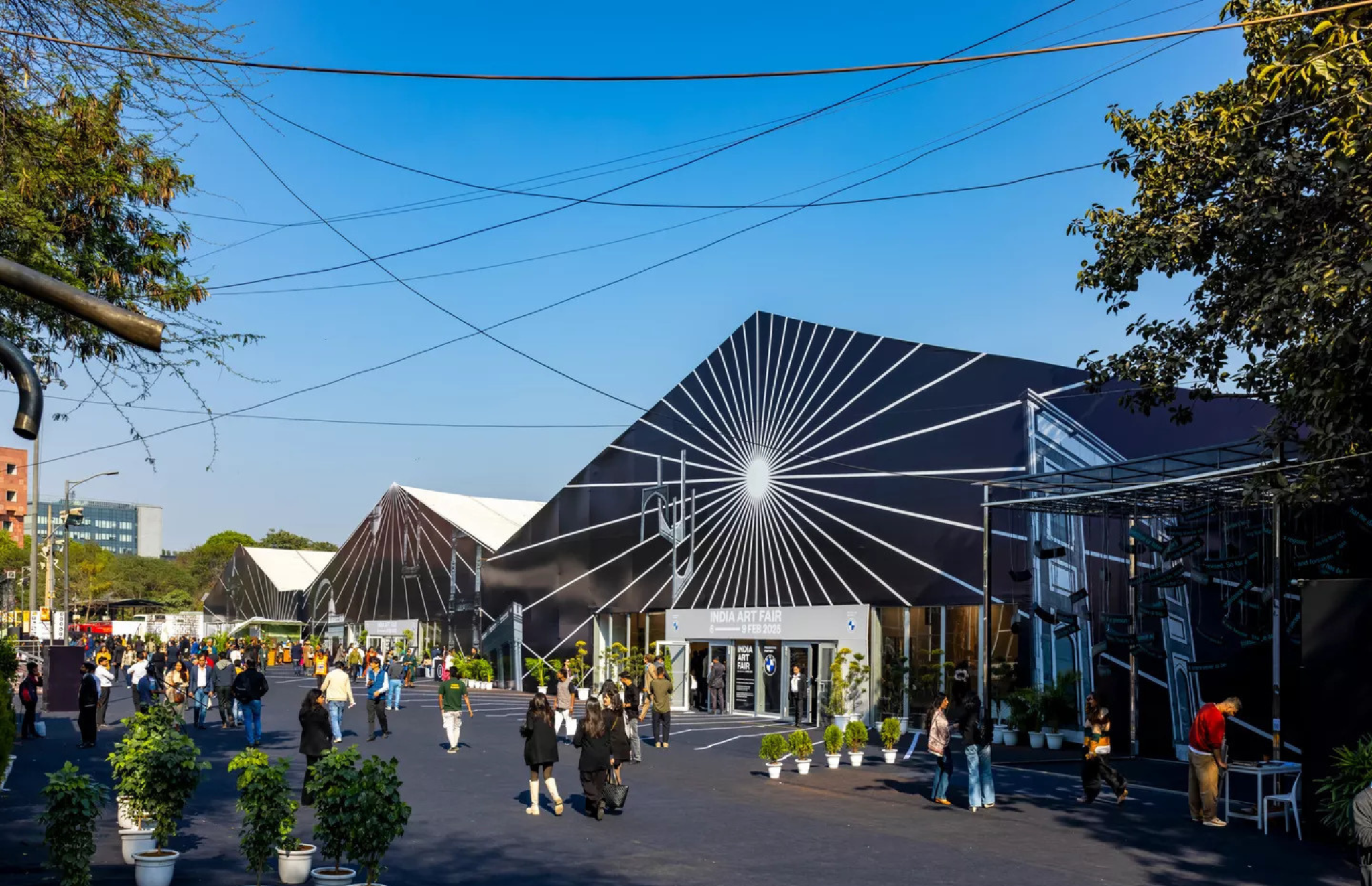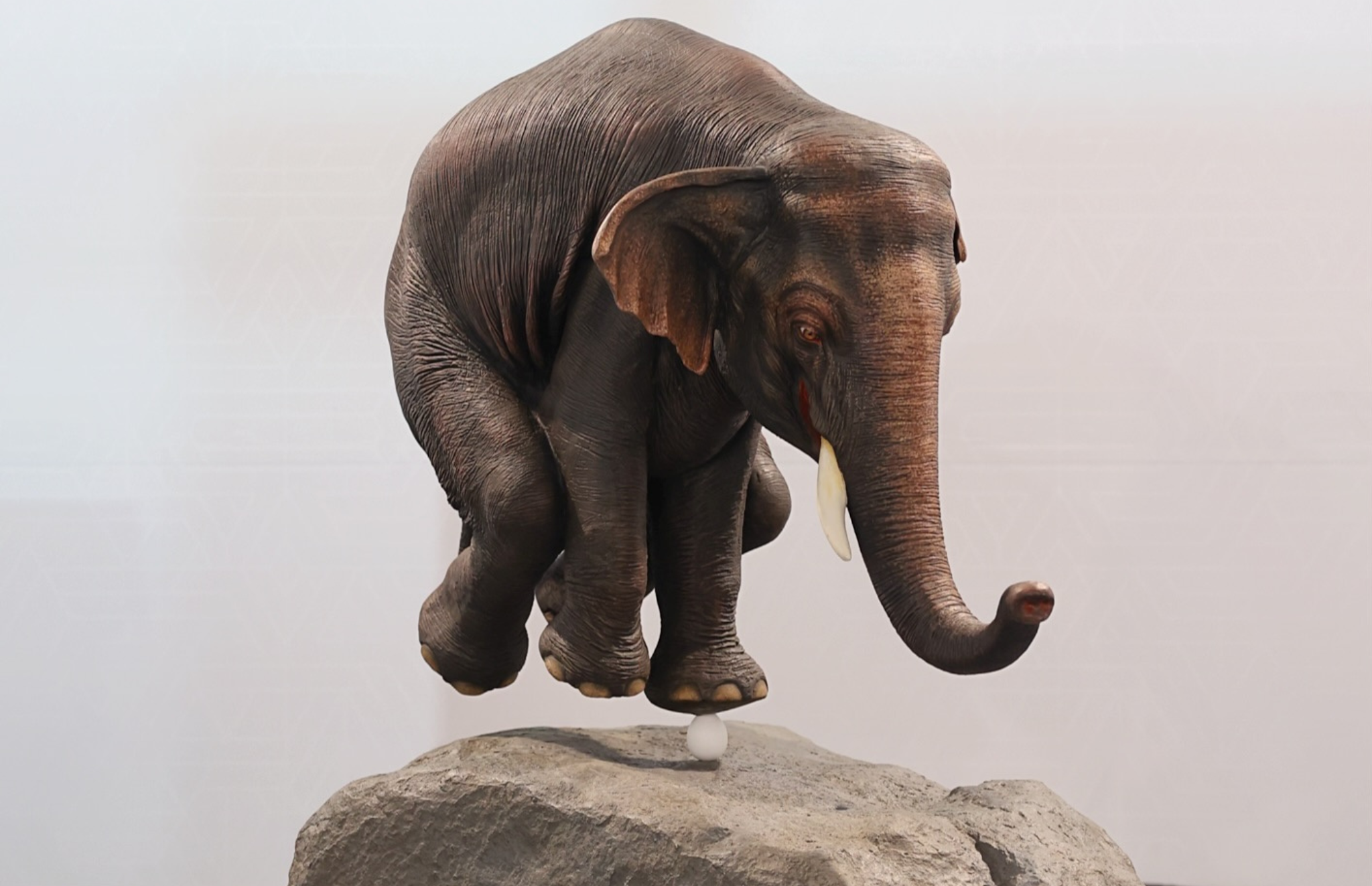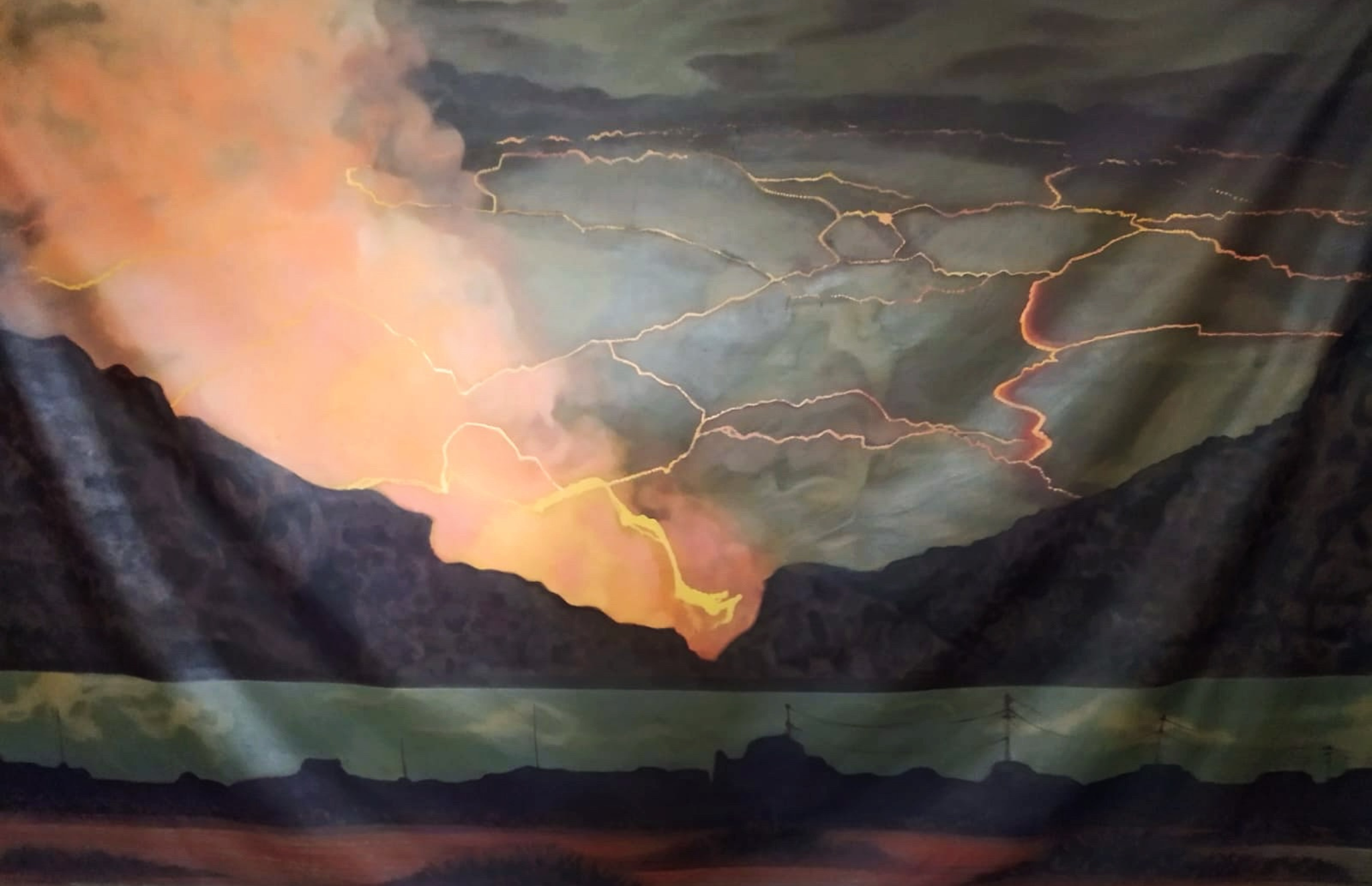INDIAN PRESENCE AT FRIEZE SEOUL 2024
Frieze Seoul returns for its third edition to COEX, in the centre of Gangnam, Seoul. The fair will feature over 110 galleries from around the globe and will run from September 4 through 7 — leaving Korea’s indelible mark as a major art destination in Asia and around the world.
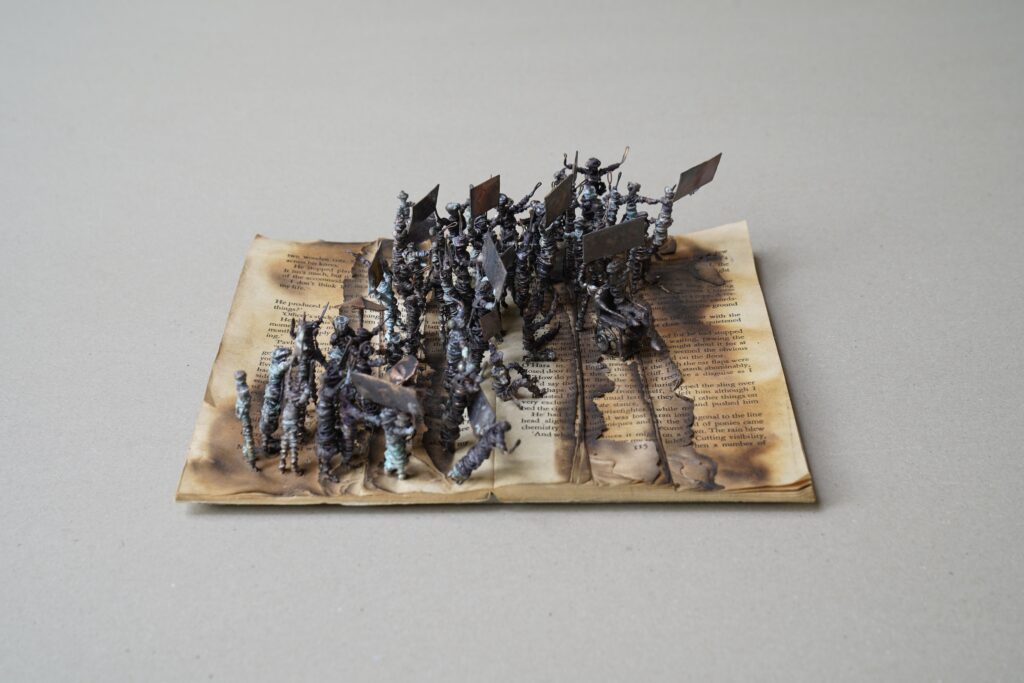
Photo courtesy: Blueprint.12 and Kingsley Gunatillake
Headed by Joselina Cruz (Director and Curator, Museum of Contemporary Art and Design, Manila) and Hyejung Jang (Chief Curator, Doosan Art Center, Seoul), this year’s Focus Asia section showcases ten solo artist presentations from Asia-based galleries that opened in or after 2012. Many emerging and innovative artists, working across a range of media, and delving into time, light, memory present their body of works at the fair. Among Indian galleries, DAG and Blueprint.12 representing works of Indian artist Sohan Qadri and Sri Lankan artist Kingsley Gunatillake respectively are the ones that one shouldn’t miss out on.

Photo coutesy: Soham Qadri and DAG
Sohan Qadri, Breath Within the Soul: The Art of Sohan Qadri, DAG, New Delhi | Mumbai | New York
Location: Focus Asia, Booth M04
DAG debuts at FRIEZE Seoul, highlighting the work of renowned neo-tantra artist Sohan Qadri. This special showcase features previously unseen abstract works, including large-scale pieces from the acclaimed Indian modernist. Known for his ink and dye creations, Qadri developed a unique abstract style — minimalist, vibrant, and deeply spiritual.
Born into privilege, Qadri (1932–2011) chose an artist’s path, intertwining his creative practice with a lifelong spiritual quest. His early travels through the Himalayas, Africa, and Europe shaped his approach, eventually settling in Copenhagen. In the 1970s, Qadri shifted from oil on canvas to focus on paper, using ink and dye to express a level of higher consciousness. His works are defined by incised lines and dots, evoking a sense of inner energy and meditative stillness. These paper creations combine Indian spirituality with global modernism, offering a visual experience reminiscent of Scandinavia’s northern lights.

Photo coutesy: Soham Qadri and DAG
Qadri’s work reflects his deep engagement with tantra, meditation, and transcendence. His meditative process involved scratching and piercing paper to create textured surfaces, symbolising the relationship between the tangible and intangible. The tactile nature of his art blurs the boundaries between two-dimensional and three-dimensional spaces, transforming paper into a medium for exploring inner worlds.
More than 20 of Qadri’s works are on display, each exemplifying his profound belief in breaking the form to reveal deeper truths. His vivid colour fields — often resembling mystical landscapes — evoke the primordial essence of tantra and transcend the limits of visual memory. The mustard yellows, scarlet hues, and deep blues symbolise the duality of emptiness and fullness, reflecting his ongoing exploration of the void and the cosmos.

Photo coutesy: Soham Qadri and DAG
Qadri’s legacy lies in his ability to merge aesthetics and spirituality, creating art that bridges the material and the metaphysical. The works invite viewers to embark on their own journey of introspection, discovering the “ultimate secret” of the human spirit within the vibrant abstractions.

Photo courtesy: Blueprint.12 and Kingsley Gunatillake
Anish Kapoor, Magenta to Clear, 2024, Lisson Gallery, London | New York | Los Angeles | Shanghai | Beijing
Location: Booth A18
Founded in 1967 by Nicholas Logsdail, Lisson Gallery stands as a cornerstone in the world of contemporary art. Since its inception, the gallery has championed the careers of pioneering Minimal and Conceptual artists, such as Carl Andre, Daniel Buren, Donald Judd, John Latham, Sol LeWitt, Richard Long, and Robert Ryman. It continues to foster creativity, and represents over 70 artists from around the globe, with gallery spaces in London, New York, Los Angeles, Shanghai, and Beijing.

Photo courtesy: Lisson Gallery and Anish Kapoor
For its third appearance at Frieze Seoul, Lisson Gallery is showcasing a dynamic selection of new and recent works by its roster of artists, including Kelly Akashi, Sarah Cunningham, Nathalie Djurberg & Hans Berg, Ryan Gander, Hiroshi Sugimoto, Oliver Lee Jackson, Anish Kapoor, Otobong Nkanga, Julian Opie, and Lucy Raven.
Among them, India-born Anish Kapoor remains a towering figure in contemporary sculpture. Known for his monumental public works that challenge the boundaries of form and engineering, Kapoor’s creations traverse a wide spectrum of materials and scales. From vast PVC skins to mirrors that seem to engulf their surroundings, his work explores profound metaphysical themes — blurring the line between presence and absence, concealment and revelation. His latest large-scale mirror piece, included in this exhibition, continues this exploration, drawing viewers into an optical interplay where reflections both captivate and consume. Titled Magenta to Clear, Kapoor’s sculpture, with its enigmatic voids and richly coloured surfaces, invites a journey inward — encouraging contemplation of the unseen depths of imagination.

Photo courtesy: Lisson Gallery and Anish Kapoor
Kingsley Gunatillake, War Text (2023), Blueprint.12, New Delhi
Location: Focus Asia, Booth F02
Represented by India’s Blueprint.12 gallery, Sri Lankan artist Kingsley Gunatillake’s politically charged “Protest” series draws from Sri Lanka’s turbulent history and depicts the Sri Lankan civil war (1983–2009). Co-owner of Blueprint.12, Riddhi Bhalla notes the growing spotlight on South Asian art, highlighting the increasing recognition of artists from countries like Sri Lanka, Nepal, and India.
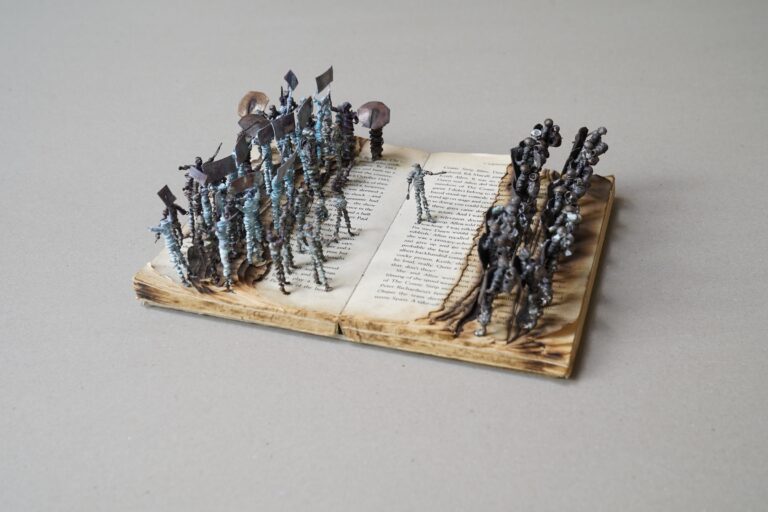
Photo courtesy: Blueprint.12 and Kingsley Gunatillake
In this series, which consists of 80 works, Gunatillake transforms books into battlefields by burning their edges and carving trenches into the pages, and filling them with tiny copper soldiers. He found these books at the secondhand stores, and made them a symbolic representation of the landscapes of war, protest, and resolution of Sri Lanka over the years.
“I want to show that protests are powerful,” Gunatillake says, drawing parallels to current events in Bangladesh and Myanmar. Spanning painting, installation, mixed media, sculpture, and video, Gunatillake’s art practice consistently challenges the state narratives of war and post-war transitions in Sri Lanka.
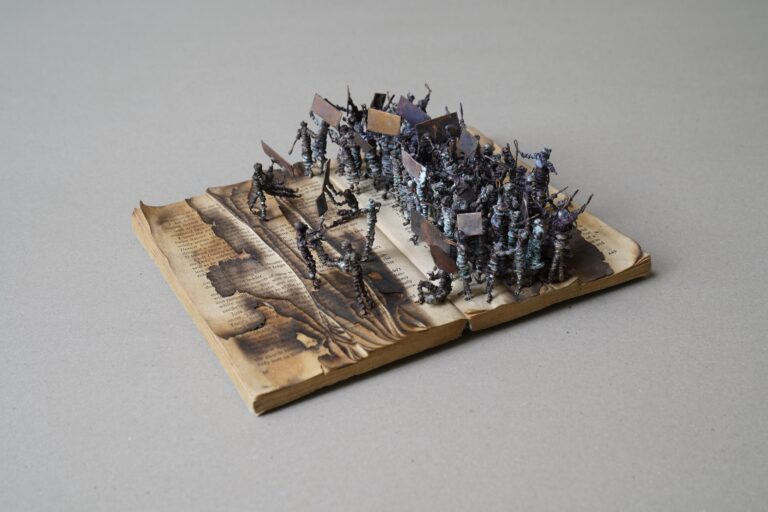
Photo courtesy: Blueprint.12 and Kingsley Gunatillake
For Gunatillake, books serve as a bridge between people, carrying the scars and memories of violence. They are both witnesses and survivors of violence. “We can’t erase history, but we can show its impact.” A practice he’s honed since the 1990s, his book art practice began as a response to the burning of the Jaffna Library in 1981. By burning and cutting into them, he evokes memories of trauma and loss, transforming these physical scars into acts of mourning and memorialization.
In both his book art and his paintings, Gunatillake explores the tension between control and chaos. His creative process allows him to manipulate images and textures, reflecting the contradictions of human experience. Rich with layers and textures, his works communicate a sense of sensuality born from both careful craftsmanship and the natural unfolding of events — inviting viewers to confront pain, history, and the complexities of memory.
Frieze Seoul runs from 4 – 7 September 2024
Text by Shalini Passi
Image Courtesy: Blueprint.12, Soham Qadri, DAG, Kingsley Gunatillake, Lisson Gallery, Anish Kapoor, and Frieze Seoul
Find out more about the exhibits here:


